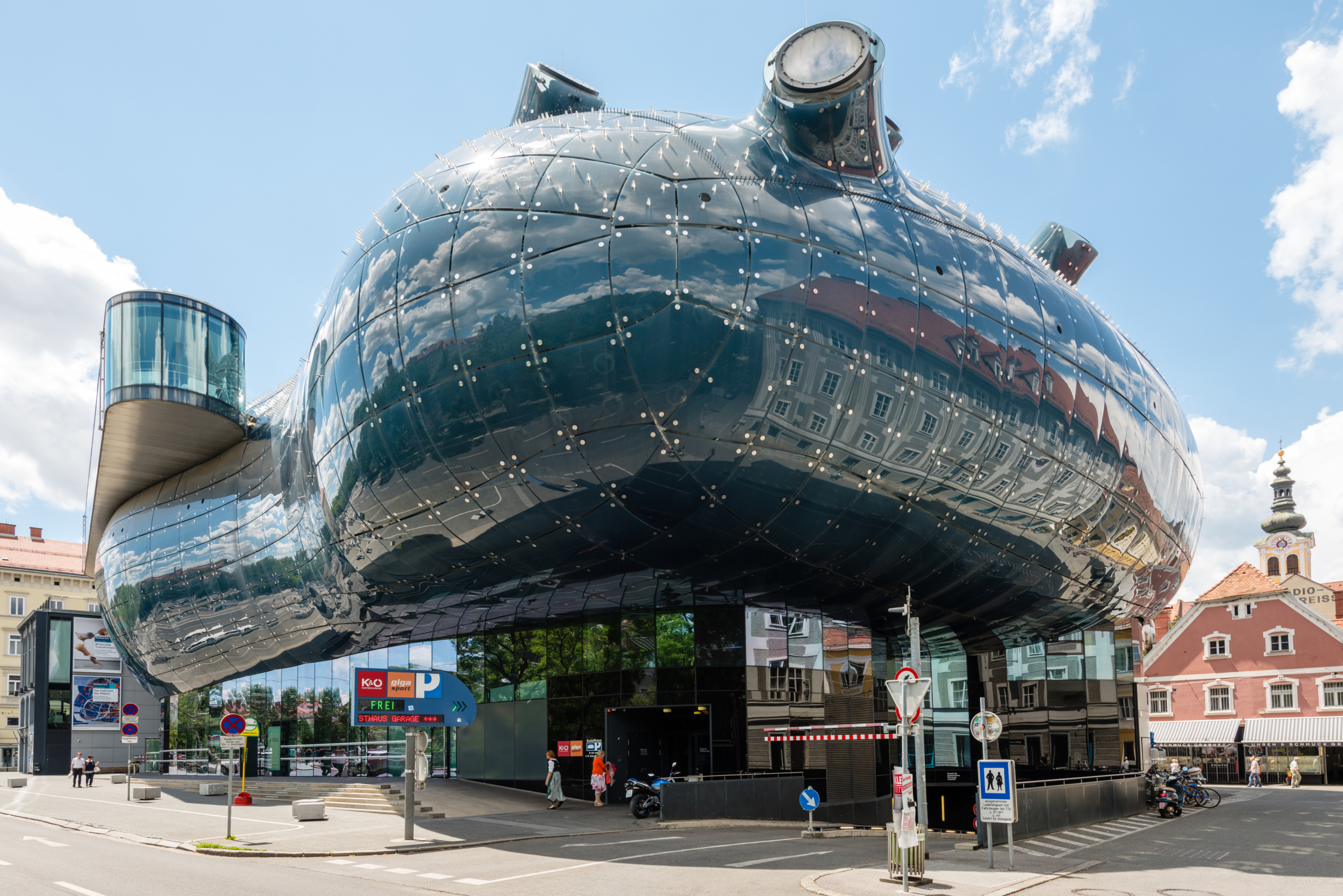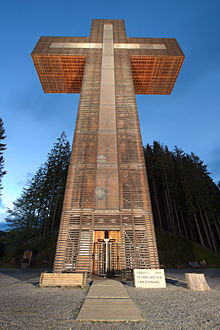Austria – Burgenland, Styria (Graz, Eisenstadt) September 23, 2019
GRAZ
City of Graz – Historic Centre and Schloss Eggenberg. A World Heritage Sites.
This central European urban complex was influenced by the secular presence of the Habsburgs and the cultural and artistic role played by the main aristocratic families from the Middle Ages until the 18th century. The ensemble of architectural, decorative and landscape originated from the Germanic region, the Balkans and the Mediterranean, for which it served as a crossroads for centuries. The greatest architects and artists of these different regions expressed themselves as each age is represented by typical buildings, which are often masterpieces.
Schlossberg. This 16th century fortress on the hill Schlossberg was hard to take…. even Napoleon failed. However, finally after the victory over the Habsburgs at the beginning of the 19th century he ordered to demolish the fortress. Only a huge amount of money paid by the city of Graz to Napoleon saved the Bell Tower and the Clock Tower from the demolition. Currently it is a romantic park. Walk up the 260 steps or take the funicular Schlossbergbahn or by a glass-lift starting in the Schlossberg tunnels.
Armoury. Dating to the 17th century, it served as an armoury for the Styrian estates in their fight against theTurks. The collection of historical weapons is the biggest in the world with 32,000 pieces of arms and military equipment on 5 floors.
Landhouse. This 16th century building is in Italian renaissance style with an arcaded courtyard.
Town Hall. This dominates the Graz Hauptplatz (the Main square) since the late 19th century with its dome, clock and the corner towers.
Painted House. Its outer facade is fully covered with gorgeous 300 year old frescos by Baroque artist Johann Mayer and show the gods of Greco-Roman mythology. GrazMuseum. There’s a wonderful model of the Sch’’’’’ as it was after construction by Napoleon. On the second floor is the history of Graz. Free
Graz Cathedral. On the outside is the Plagues of God fresco painted in 1485 to commemorate the year 1480 when the Turks were expelled along with the plague and locusts. The picture shows the Holy Trinity, plague and locusts. The main cathedral was closed for renovation but what is open is the small mausoleum next door, a Latin Cross with large marble altars in the apse and left transept, frescoes in the apse and small dome and elaborate plaster in the dome, capitals and arches. A side chapel on the right has a tomb with Jesus lying on top.
Herz-Jesu-Kirche. This is a lovely single nave church with 5 large chapels per side, each with a stained glass window, several with frescoes on the back walls and retables with scenes and paintings. The highlight is the large frescoes on the walls above the arches. Lovely round brass chandeliers and a brass crown of statues over the pulpit are also striking. Free
Kunsthaus Graz. In the NM “Modern Architecture Buildings” series, this all black glass building is very futuristic. The first floor has straight walls and the top is 2 stories of “space ship”, all round and bulging out. It is shaped like a bean and has odd round knobs coming off the roof. The inside also has the same black glass roof.
Fetzenmarkte. A flea market north of Graz.
Veitsch Mount of Olives Pilgrims Cross (Pilgerkreuz Veitsch), Veitsch. In the new NM “Religious Monuments” series, it is the world’s largest pilgrims cross (10th highest cross in the world – the highest is the Valley of the Fallen in Spain at 150m, built 1941-59 by Franco to commemorate those killed in the Spanish Civil War). Built in 2004, it is made of wood and is 40.6m high with cross arms spanning 32.20m. This large cross sits on a promontory above this village. I didn’t walk up to it but there is a forest trail starting from the local church in Veitsch.

Semmering Railway. This starts in Floggnitz and leads over the Semmering to Murzzuschlag, the first mountain railway in Europe built (1748-1854) with standard gauge track. It is commonly referred to as the first mountain railway because of the difficult terrain and considerable altitude difference that was mastered during its construction. 20,000 workers were involved in the construction. It is 41km long with a maximum incline of 2.5%, 14 tunnels (the summit tunnel is 1,431m long), 16 viaducts (several two-story) and over 100 stone arch bridges and 11 small iron bridges. Over the 41kms, it overcomes an altitude difference of 460m with 60% a 2-2.5% grade (equivalent to 1-meter over 40m distance) and 16% has a curvature radius of only 190m requiring a speed of 11.5kms/hour be maintained. it was an entirely new technical railway construction with new instruments and methods of surveying developed to handle the challenges. New locomotives (the Engerth with an articulated tender allowing sharp turning radius’ and some of the weight of the fuel and waster carried on the driving wheels to improve adhesion) were also built to handle the grade and turning radius. It opened the Semmering region for tourism with numerous hotels and mansions built in the era.
It was WHS listed in 1998 and is still fully functioning. As part of the Southern Line, it connects Klagenfurt and Graz with Vienna. The most common way to do the trip is from Vienna to Semmerling (76kms) with 30 trains per day – €21, fastest 1 hour and 15 minutes (direct trains), average time 1h 52 min, (the fastest times are at 08:29, 8:58, 11:58, 15:22, 16:58, 17:58, 18:09.


The 27.3km Semmering Base Tunnel is presently being constructed to bypass the line. It is expected to be open in 2024 at a total cost of €3.1 billion.
NOMAD MANIA Austria – Burgenland, Styria (Graz, Eisenstadt)
World Heritage Sites
City of Graz – Historic Centre and Schloss Eggenberg
Fertö / Neusiedlersee Cultural Landscape
Hallstatt-Dachstein / Salzkammergut Cultural Landscape
Semmering Railway
Tentative WHS: Iron Trail with Erzberg and the old town of Steyr (23/01/2002)
Sights (Temporarily Reinstated)
Hot Springs / Thermae in Burgenland
Mariazell Basilica
Borders
Austria (river/lake border)
Austria-Hungary
Austria-Slovakia
Austria-Slovenia
XL
Bad Radkersburg/Gornja Radgona
Deutschkreuz area
Neusiedl am See area
Railway, Metro, Funiculars, Cable Cars
Enns Valley Railway (Salzburg-Styria)
Railjet
Semmering line
Museums
Aschau: Museum of Clocks and Watches
Güssing: Emigrant Museum – Josef Reichl House
Sankt Michael im Burgenland: Landtechnik-Museum Burgenland
Unterbildein: Burgenland History House
House Museums/Plantations: Raiding: Franz Liszt’s birthplace
Castles, Palaces, Forts
Forchtenstein: Forchtenstein Castle
Herberstein: Herberstein Castle
Murau: Obermurau Castle (Schloss Murau)
Riegersburg: Riegersburg Castle
World of Nature
Gesäuse
Neusiedler See – Seewinkel
Festivals
La Strada, Graz
Lockenhaus Chamber Music Festival
Steirischer Herbst
Entertainment/Things to do: Schloss Herberstein Zoo and Nature Park
Planetariums: Judenburg: Planetarium Judenburg
Theme Parks: Sankt Margarethen: Familypark Neusiedlersee
Windmills: Podersdorf am See: Windmill
Caves
Drachenhöhle
Lurgrotte
Ski Resorts: Schladming
Religious Monuments: Veitsch: Veitsch Mount of Olives Pilgrims Cross (Pilgerkreuz Veitsch) new
Open-Air Museums
Freilichtmuseum Bad Tatzmannsdorf
Freilichtmuseum Ensemble Gerersdorf
Stübing: Austrian Open Air Museum Stübing
Aviation Museums: Wiener Neustadt: Aviation Museum
European Cities
GRAZ World Cities and Popular Towns
World Heritage Sites: City of Graz – Historic Centre and Schloss Eggenberg
Airports: Graz (GRZ)
Railway, Metro, Funiculars, Cable Cars: Graz Trams, Schlossbergbahn, Graz
Museums
GrazMuseum
Joanneumsviertel: Neue Galerie Graz & Naturkundemuseum
KunstHaus
Künstlerhaus Graz
Museum für Geschichte
Museum of Perception
Neue Galerie
Styrian Armoury
Universalmuseum Joanneum
House Museums/Plantations: Arnold Schwarzenneger Museum
Religious Temples
Graz Cathedral
Herz-Jesu-Kirche
Modern Architecture Buildings: Kunsthaus Graz
Markets: Fetzenmarkte
Aviation Museums: Osterreichisches Luftfahrtmuseum
Railway Museums: Graz Tramway Museum
Villages and Small Towns
Mariazell
Ramsau
EISENSTADT
Museums:
Austrian Jewish Museum
Burgerland Museum
Castles, Palaces, Forts: Esterházy Palace